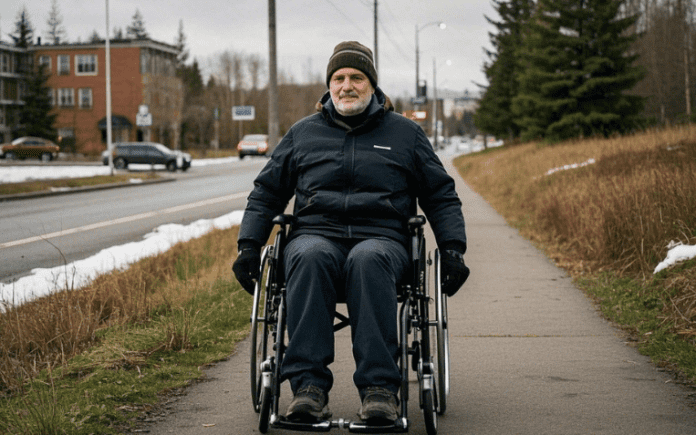When a health issue unexpectedly takes you away from work, it can leave you not only physically drained but also financially stressed. Whether it’s an illness, injury, or mental health condition, being unable to earn a paycheque even for a short time can disrupt your life. That’s why short term disability benefits exist—to provide temporary income support while you recover and get back on your feet.
In this guide, we’ll explore what short-term disability means in Canada, who qualifies, how to apply, what to do if you’re denied, and how it compares to other forms of financial assistance.
Table of Contents
What Is Short-Term Disability?
Short-term disability provides income replacement to people who are temporarily unable to work due to a medical condition. Short-term disability benefits usually come from employer-sponsored plans, private insurance policies, or group benefits through unions or associations. They’re distinct from long-term disability, which supports people with more permanent or prolonged conditions. While long term disability might kick in after several months, short term disability typically covers absences that last a few weeks to about six months.
Who Qualifies for Short Term Disability?
To be eligible for short term disability, you must be employed and actively enrolled in a qualifying benefits plan. You must also be under the care of a medical professional who can confirm that you cannot perform your job duties due to a temporary medical condition. Common qualifying conditions include surgical recovery, serious injuries like back or joint trauma, complications during or after childbirth, and mental health issues such as anxiety, depression, or work-related burnout.
Read More: Glass Skin Products
What Do Benefits Typically Include?
Short term disability plans vary, but they usually offer between 50 to 70 percent of your regular income for a set period, often between six and 26 weeks. Most plans include a waiting period of 7 to 14 days after the start of your disability before payments begin. Depending on your employer’s policy, you might have to use sick leave or vacation time during this waiting period. Once the benefits start, they can provide crucial financial relief during recovery.
How to Apply for Short Term Disability?
Applying involves several steps and some paperwork. First, notify your employer or benefits provider as soon as you know you’ll need time off. They’ll usually provide the forms needed for the claim. You’ll need to complete a section with your personal and job information, and your physician will need to fill out a medical statement explaining your condition, treatment plan, and recovery timeline. Insurers typically take one to two weeks to assess your application and notify you of their decision.
Why Are Claims Denied?
Unfortunately, it’s not uncommon for claims to be denied, especially at the initial stage. The most frequent reasons include missing or insufficient medical evidence, missed deadlines, inconsistencies between your doctor’s report and your own account, or a conclusion that your condition doesn’t meet the plan’s definition of “disabling.” While a denial can be disheartening, it isn’t the end of the road. Most plans offer an appeals process that allows you to submit additional documentation and request a review.
What to Do if Your Claim is Denied?
If your claim is denied, the first step is to carefully read the denial letter and understand the insurer’s reasoning. Then request a full copy of your claim file, which will include medical assessments and notes made by the insurance company. Collect any new or updated medical documentation that supports your inability to work. You might need to see a specialist or get a more detailed statement from your doctor. Submit your appeal before the deadline outlined in your policy—usually between 30 and 90 days. It’s essential to keep detailed records of all your communications and submissions throughout the process.
Tips to Strengthen Your Claim
To boost your chances of a successful application, take proactive steps from the beginning. Notify your employer and insurer early and submit all forms on time. Be honest and consistent in your descriptions of your condition. Make sure your medical records align with your claim and that your doctor clearly explains how your condition prevents you from working. Follow all recommended treatments and appointments, as skipping care can hurt your case. Keep copies of all forms, emails, and communications—documentation is your best friend.
Can You Be Fired While on Short Term Disability?
Being on short term disability doesn’t automatically mean your job is protected, but Canadian law does prohibit employers from terminating someone solely because they’re on medical leave. That said, each case is different. If you’re away from work for an extended period, or if your condition becomes long-term, your employer may consider replacing your position. If this happens, it’s important to understand your rights and possibly seek legal guidance.
How Long Does It Last?
The length of coverage depends on your policy. Some plans cover up to 17 weeks, while others extend up to 26 weeks or more. If your condition lasts longer than your short term disability coverage, you may be eligible for long term disability, Employment Insurance (EI) sickness benefits, or other provincial or federal support. Plan the transition from short-term disability to other programs in advance to avoid gaps in income.
Conclusion: Be Prepared for the Unexpected
Health issues can strike at any time, and being informed is your first line of defense. Understanding how short term disability works can help you navigate the application process confidently and avoid common pitfalls. If you’re applying for benefits or dealing with a claim denial, stay organized, keep detailed records, and seek help when needed. These benefits exist to support your recovery, protect your income, and reduce stress during a difficult time—make sure you get the help you’re entitled to.
Apart from that if you want to know about “Revitalise Your Body With Aloe Vera Juice” then please visit our “Health” Category.
















